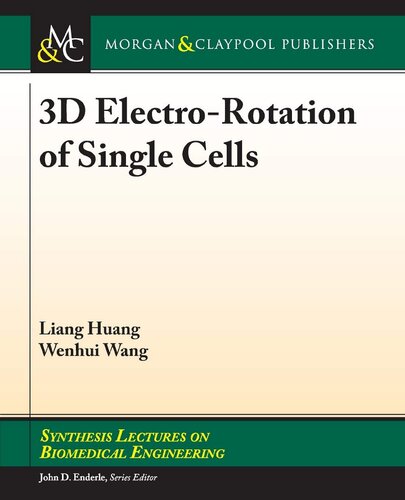

Most ebook files are in PDF format, so you can easily read them using various software such as Foxit Reader or directly on the Google Chrome browser.
Some ebook files are released by publishers in other formats such as .awz, .mobi, .epub, .fb2, etc. You may need to install specific software to read these formats on mobile/PC, such as Calibre.
Please read the tutorial at this link: https://ebookbell.com/faq
We offer FREE conversion to the popular formats you request; however, this may take some time. Therefore, right after payment, please email us, and we will try to provide the service as quickly as possible.
For some exceptional file formats or broken links (if any), please refrain from opening any disputes. Instead, email us first, and we will try to assist within a maximum of 6 hours.
EbookBell Team

5.0
18 reviewsDielectrophoresis microfluidic chips have been widely used in various biological applications due to their advantages of convenient operation, high throughput, and low cost.
However, most of the DEP microfluidic chips are based on 2D planar electrodes which have some limitations, such as electric field attenuation, small effective working regions, and weak DEP forces. In order to overcome the limitations of 2D planar electrodes, two kinds of thick-electrode DEP chips were designed to realize manipulation and multi-parameter measurement of single cells.
Based on the multi-electrode structure of thick-electrode DEP, a single-cell 3D electro-rotation chip of "Armillary Sphere" was designed. The chip uses four thick electrodes and a bottom planar electrode to form an electric field chamber, which can control 3D rotation of single cells under different electric signal configurations. Electrical property measurement and 3D image reconstruction of single cells are achieved based on single-cell 3D rotation. This work overcomes the limitations of 2D planar electrodes and effectively solves the problem of unstable spatial position of single-cell samples, and provides a new platform for single-cell analysis.
Based on multi-electrode structure of thick-electrode DEP, a microfluidic chip with optoelectronic integration was presented. A dual-fiber optical stretcher embedded in thick electrodes can trap and stretch a single cell while the thick electrodes are used for single-cell rotation. Stretching and rotation manipulation gives the chip the ability to simultaneously measure mechanical and electrical properties of single cells, providing a versatile platform for single-cell analysis, further extending the application of thick-electrode DEP in biological manipulation and analysis.